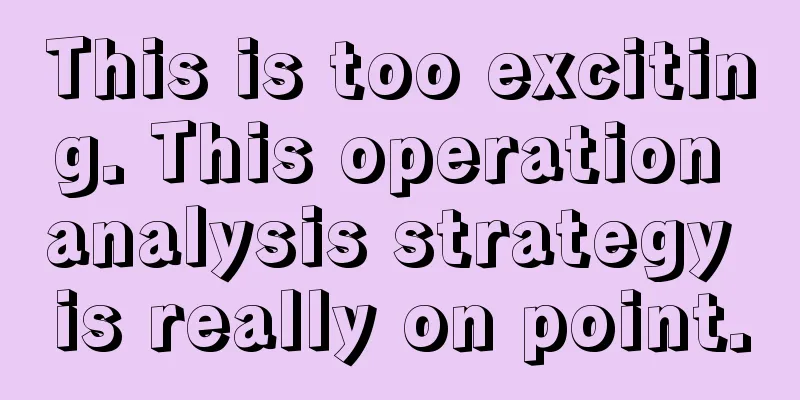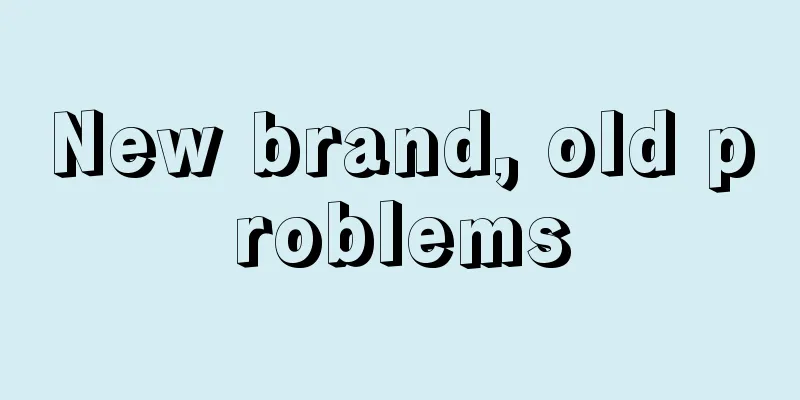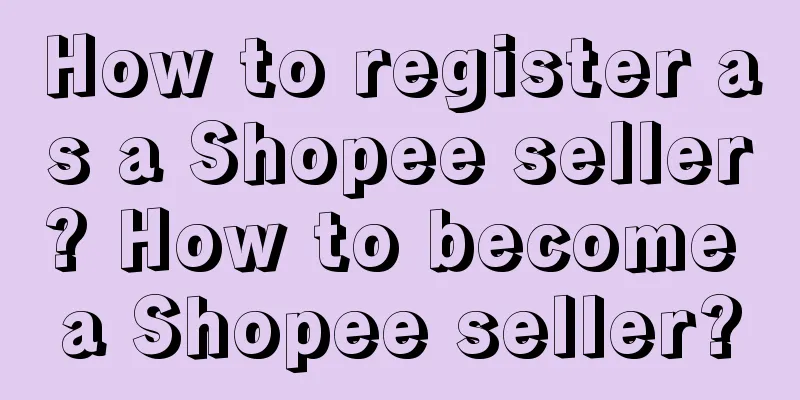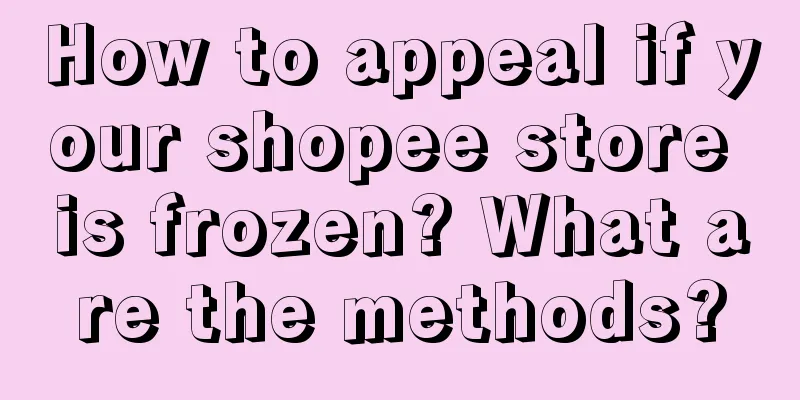This is too exciting. This operation analysis strategy is really on point.

Students who work in operations often need to look at data, but they are often confused when looking at the data: "I have looked at a bunch of data, so what? So what should I do?" Especially when the indicators are falling, they only look at the "year-on-year decline, month-on-month decline" and don't know how to find solutions to the problem from the data, which makes them anxious. Today I will systematically share with you how to find operational solutions from data. The article is quite long, so remember to like and follow it, and come back to read it slowly. 01 Problem AnalysisToo many factors may affect user decisions. The division of labor in large companies is very detailed and often completed by different groups, such as:
When the indicators drop, I have to figure out immediately whether it is a problem with my department or someone else's, so that I can decide whether to work alone or hold a meeting to "align". Although the process of small factories is not so complicated, it is still very important to find the key issues, especially whether to give additional promotional resources. The leaders of small factories are very tight on budgets, and they will definitely have opinions if they only rely on continuous investment in activities. However, if they do not invest resources, it is likely that there will be no effect. Therefore, finding the key impact of the problem and distinguishing the operational focus are the key to analysis. In different scenarios, the operation methods are slightly different. 02 Content Operation ScenarioIn content operations, the main evaluation indicators are generally: article reading number/video playback volume, forwarding/like number, sales/registration/company WeChat number. However, the factors that affect these indicators are not all controllable by content operations. Especially for sales/registration conversion content, product quality, promotional activities, registration rewards, etc. will directly affect the results. Therefore, when doing content operation analysis, it is necessary to distinguish clearly:
As shown in the following figure: In this way, when analyzing the effects, you can first distinguish the types. Content that increases followers/reading volume often does not require cooperation from other departments and can be done by yourself. Therefore, you can just look at what works best and take advantage of hot topics and attract attention like entertainment self-media. However, the sales/conversion categories will definitely be affected by other departments. At this time, you can compare:
After the analysis, you can provide suggestions to other departments. Whether it is product operation, user operation, or event operation, content is needed as a means of promotion. Content reading/conversion effect analysis can directly remind them: your product selection/event planning does not seem to be that good, pay attention to adjustments! 03 Product Operation ScenarioIn commodity operation, sales volume, gross profit, and inventory turnover rate are generally used as the main evaluation indicators. Commodity purchase, sales, and inventory management are directly related to sales, so they are easily affected by user operations and activity operations. What type of coupons are given to users, what products are promoted, and what categories are promoted will all affect the regular sales trend of commodities. It is also very likely that excessive promotion of a certain product in the short term will lead to false prosperity or excessive shortages, disrupting the normal operating rhythm. Therefore, when doing product operation analysis, you can:
As shown in the following figure: In this way, when analyzing the effect, first distinguish at which stage the problem occurs, namely, listing/hot selling/delisting, and then see whether it is interfered by activities/promotions/promotions. Common problem combinations:
These issues are what are truly suitable for all departments to sit down and discuss together. Avoiding mindless discounts/coupons can greatly improve the performance of each department. 04 User Operation ScenarioIn user operation, the main evaluation indicators are generally: the number of new users, the number of active users, the conversion rate, the number of new VIPs, etc. User operation is the most complex scenario because it is related to multiple factors such as advertising, promotional content, and promotional activities, and it is the easiest to get entangled in various factors. Therefore, to analyze the user situation, we must first clearly distinguish the user situation
As shown in the following figure: After sorting out the information, when there is a problem with user conversion, first check whether the user problem comes from new users or old users. If the problem is more serious with new users, check the advertising promotion efficiency. If the problem is more serious with old users, first check whether there is a problem with the activity rate, determine whether a large-scale recall is needed, and then check whether the problem is at a high, medium or low level, and think about countermeasures based on consumer demand. Here are some hidden issues to watch out for:
In essence, these are the sequelae of over-reliance on discounts and coupons. For operations, short-term spending on growth VS improving product strength for long-term retention is a classic topic. Of course, it is necessary to first label the content, products, and user situations, and do basic analysis and attribution before dealing with more responsible issues. |
<<: Livestreaming to sell sweet potatoes failed to save Zhong Xue Gao
>>: Overlord Tea Princess, she is really good at writing copy!
Recommend
How to calculate eBay advertising fees? How to set up eBay advertising?
When opening a store on eBay, if you want more tra...
Millions of dollars spent just to change a name? Three repositionings that Lao Xiang Ji didn’t tell you about
Have you ever wondered if the trend of Lao Xiang J...
With 5.28 million new users in one year, are small and medium-sized influencers taking the center stage in Douyin's e-commerce?
Small and medium-sized influencers are becoming th...
The "table-turning" Lao Xiang Chicken uses sincerity to gain trust
Pre-prepared meals have always been a topic of con...
Brand No. 1: (category + mindset + origin) x coverage
This article explains how to build a brand in four...
To analyze indicator fluctuations, the data model should be built like this
In the world of data analytics, fluctuations in bu...
What are the entry requirements for etsy? Do I need a brand to join?
If you want to trade on Etsy, you must ensure that...
Does Shopee have traffic for newly launched products? How to increase traffic?
One of the important things when opening a store o...
What is the process of listing products on Lazada? How does Lazada deliver products quickly?
The current development of Lazad cross-border e-co...
Wanglaoji launches Sichuan pepper flavor, curiosity becomes the new traffic code for the brand!
How do brands use their unique marketing tactics t...
From the “top-tier” milk tea brand to an “outdated internet celebrity”, why did 1DianDian fall behind?
What did 1DianDian go through from being the "...
How did coffee start to develop in strange directions?
Introduction: Unimaginable curiosity, never-ending...
Four hardcore ways to make money with IP on video accounts
This article starts from the perspective of self-m...
Top foodies are rushing to pay the "entry fee" to food delivery platforms
In the current economic environment, young people&...
If we continue to do this, there will be fewer and fewer people starting businesses!
This article deeply analyzes the challenges and di...









